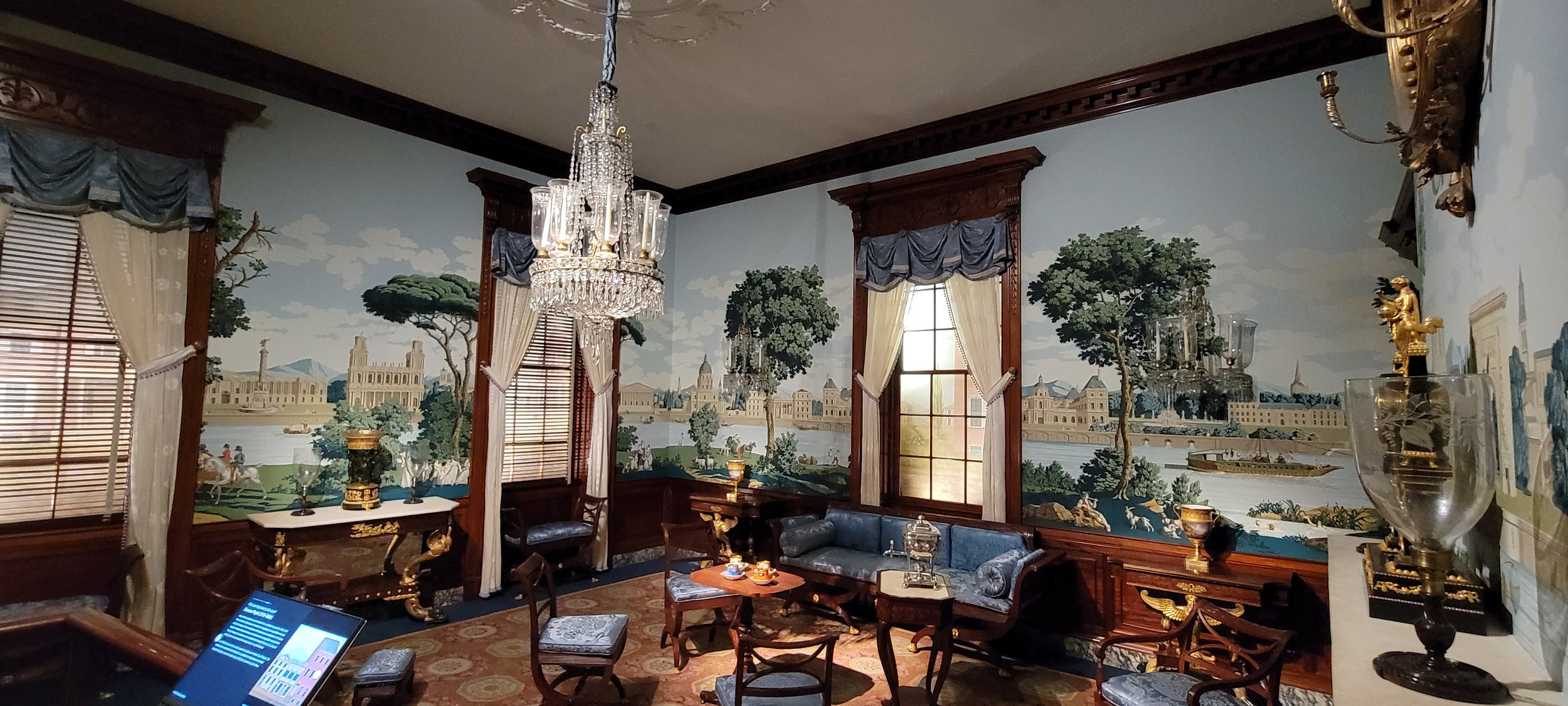Checking out the American Museum at the Met

This past weekend, AFPC-USA visited the Met Museum to explore the American Wing, which is now celebrating its 100th anniversary (as of November 2024). The American Wing’s collection has been revamped to include more diverse representations of art over the last several centuries, and it is a perfect place to get a better understanding of how the fine arts developed here and to learn more about the artists themselves.
As you enter the large gallery space of the American Wing, you are confronted by the enormous façade of a grand English Palladian style building with Greek revival elements. Before the museum acquired it in 1915, the façade was a part of a two-story bank located on Wall Street. It now serves at the main entrance to the American Wing. Visitors entering the front door are able to take a walk back in time, seeing decorative art, fine art, paintings, sculpture, furniture and more dating from 1650-1950.
Even at the time the exhibit opened in 1924, it was quite innovative to see the period fooms so wonderfully recreated, showing the progression and changes in style over the decades and centuries. The Colonial revival star was very popular at the time the wing opened, and the museum focused on the connection between England and the colonies in America. As a part of the 100th anniversary of the wing, the museum has adapted many elements of the exhibition to be more inclusive and diverse, showcasing works by not only the well-known masters of the fine arts, but of more women and people of color.
The first room on the ground level showcases two extraordinary items. There is a wonderful juxtaposition between the work of slave potter and poet, Dave Drake, and an elegantly etched silver teapot from the workshop of Paul Revere. Until more recently, works by people of color and even women were not usually placed side by side, but the strength of seeing them together reminds us all how their lives were deeply connected. The clay pot dates from 1858 at the height of the tension building up to the Civil War, and the creator’s poetry is etched around the pot itself.
In the Richmond Room, dating from 1810-11, we learned that even the choice of wood for the trim along the windows, doors, and ceiling has a difficult connection with slavery. Only the very rich could afford the prized mahogany wood grown in the Caribbean, and the owner of this room, Mr. Williams, not only had slaves working in his home, but was a plantation owner with slaves laboring there. Visitors may also notice that throughout the various period rooms, even some of the earliest pieces of furniture avoid straight lines. The level of craftsmanship is amazing, and as we took in the many examples of wooden furniture, the artistry only became more intricate, more exquisite, making the furniture seem more like art pieces rather than made for any utilitarian purpose.
As we entered the galleries on the second floor of the American wing, we learned that the rooms and pieces were displayed based on the principles of cultural identity, place and temporality, time, and modernism. Much like in the period rooms, you could see iconic long standing pieces placed next to newer acquisitions, as in the case of the famous Madame X portrait by John Singer Sargeant hanging next to a contemporary work by Elizabeth Colomba. Her piece mirrors Sergeant’s in the shape and color palette of her subject’s dress, and brings to light that during Sargeant’s era, women of color were generally not the subject of any paintings. It is striking to see those two works being featured together in the Gilded Age Gallery.
We also saw paintings featuring an enslaved youth next to the daughter of a wealthy family, and Homer's iconic painting, The Gulf Stream, showing a man of color alone in a small fishing boat in the perilous waters. Nearby we saw a work by Edith Mitchill Prellwitz, a very fine artist who hasn’t had the same recognition as her contemporaries. But her beautiful work, The Elevated, from 1888, is on display and is reminiscent of Monet.
Lastly, it is important to visit the Native American Gallery, which has permanent U.S. and Canadian art from 90 Native sovereign states. The art pieces are both historical and by current artists and all of them tell a story of their culture. One of the goals for this part of the exhibit was to make sure people coming to the American Wing from Native American backgrounds felt represented, and the museum has done well to accomplish that.

